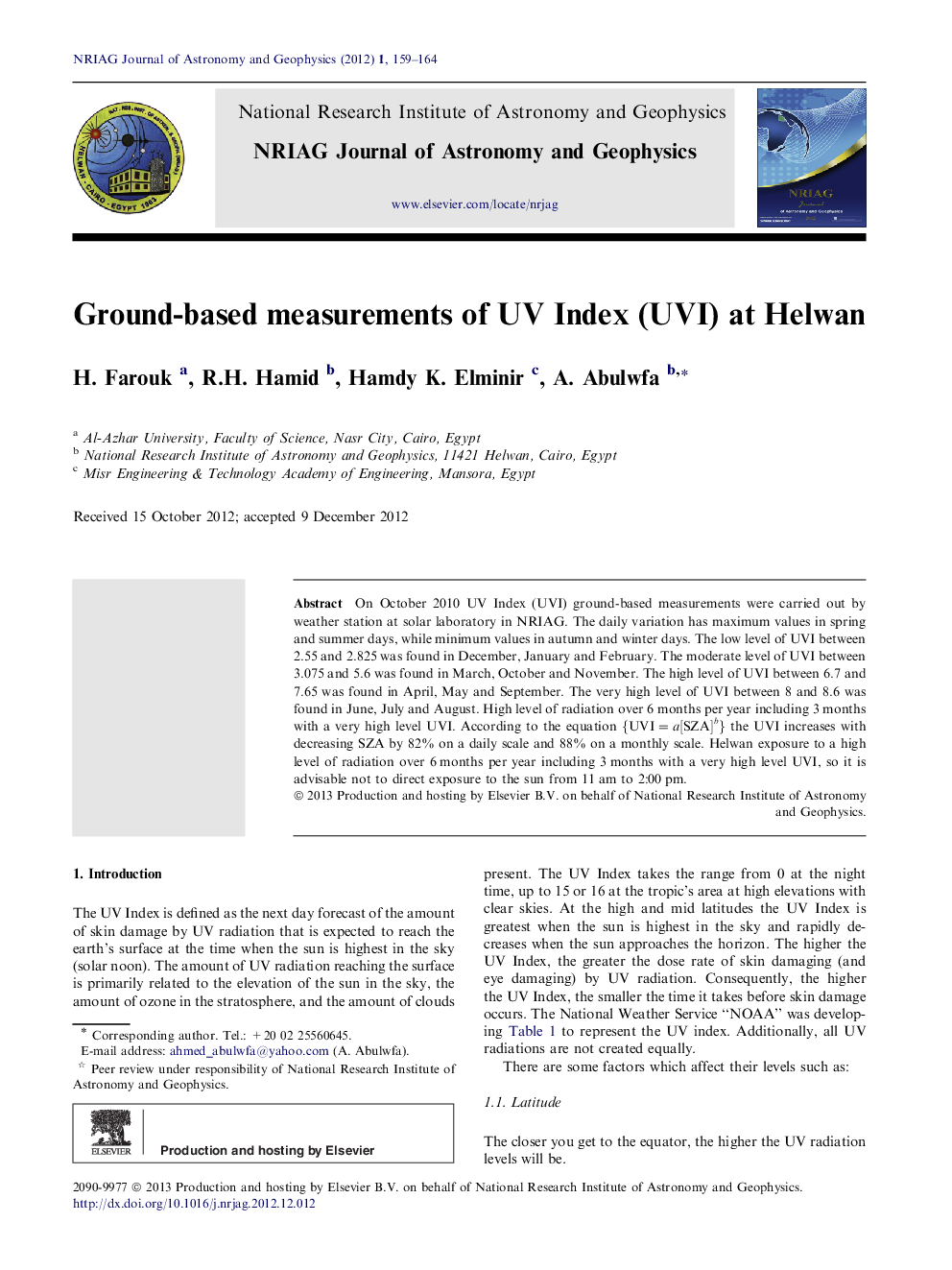| Article ID | Journal | Published Year | Pages | File Type |
|---|---|---|---|---|
| 1780677 | NRIAG Journal of Astronomy and Geophysics | 2012 | 6 Pages |
On October 2010 UV Index (UVI) ground-based measurements were carried out by weather station at solar laboratory in NRIAG. The daily variation has maximum values in spring and summer days, while minimum values in autumn and winter days. The low level of UVI between 2.55 and 2.825 was found in December, January and February. The moderate level of UVI between 3.075 and 5.6 was found in March, October and November. The high level of UVI between 6.7 and 7.65 was found in April, May and September. The very high level of UVI between 8 and 8.6 was found in June, July and August. High level of radiation over 6 months per year including 3 months with a very high level UVI. According to the equation {UVI=a[SZA]b}{UVI=a[SZA]b} the UVI increases with decreasing SZA by 82% on a daily scale and 88% on a monthly scale. Helwan exposure to a high level of radiation over 6 months per year including 3 months with a very high level UVI, so it is advisable not to direct exposure to the sun from 11 am to 2:00 pm.
